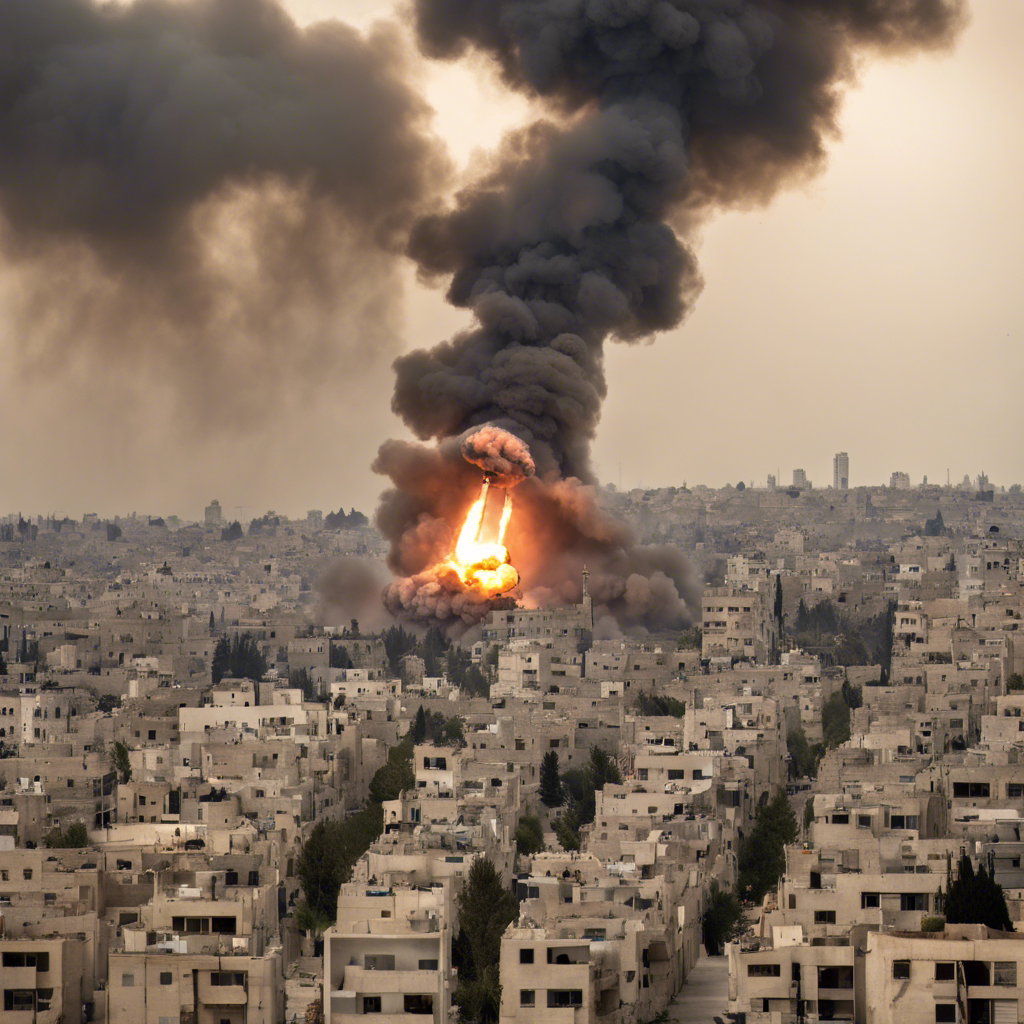Israel’s War in Gaza: A Long Haul for Peace and Stability

Israel’s military campaign in Gaza continues as it seeks to dismantle Hamas and restore stability to the region.
As 2023 comes to a close, Israel finds itself engaged in a protracted conflict in the Gaza Strip. The Israel Defence Forces (IDF) have launched a series of offensives, targeting Hamas strongholds and tunnels that lie beneath Gaza’s civilian population. The IDF aims to dismantle Hamas’s military infrastructure and ensure the safety of Israeli citizens. However, the war has taken a toll on both the Israeli economy and the global perception of the conflict. As the IDF prepares for a long haul, pressure mounts from the American administration to address the humanitarian crisis in Gaza and work towards a new local government. With mixed results thus far, Israel faces challenges in achieving its objectives while maintaining public support.
Tunnels and Civilian Shielding
The IDF has taken journalists on tours of the tunnels constructed by Hamas beneath Gaza. These tours aim to highlight Hamas’s military infrastructure embedded within civilian areas, including hospitals and schools. Israel argues that Hamas’s use of civilian shielding is the main reason for the high death toll among Palestinians. The IDF estimates that between 8,000 and 9,000 of the 21,500 Palestinians killed in the conflict are Hamas fighters. By showcasing the extent of the tunnel network, Israel emphasizes the need to destroy it entirely, a process that will require months of military occupation and skirmishes with remaining Hamas fighters.
Economic Impact and Mobilization
Israel’s war effort has had significant economic consequences and caused disruption across the country. The IDF quickly mobilized reservists following Hamas’s attack, resulting in over half a million people in uniform, including combat-support units. In recent weeks, tens of thousands of reservists have been discharged, with more scheduled for demobilization in late January. However, the IDF anticipates recalling reservists throughout 2024, designating it as a “year of warfare.” The war’s impact on the economy is felt deeply, further motivating Israel to bring the conflict to a resolution.
Military Progress and Guerrilla Tactics
After two months of ground offensive, the IDF has achieved mixed results. Hamas’s command structure has been severely damaged, with most of its commanders and fighters killed, wounded, or captured. The IDF has also curtailed Hamas’s rocket launches at Israeli cities. However, Hamas fighters have reverted to guerrilla tactics, emerging from tunnels in small numbers to ambush Israeli forces. Despite these challenges, the IDF remains committed to its objectives of capturing Hamas’s top leaders and rescuing Israeli hostages.
Political Negotiations and Internal Discord
Hamas’s political leadership, based outside of Gaza, is engaged in negotiations in Egypt to secure a second agreement for the release of Israeli hostages. However, internal discord within Hamas complicates the negotiation process. Yahya Sinwar, Hamas’s leader in Gaza, is reportedly vetoing some proposals put forward by his colleagues in Cairo, demanding stiffer terms for the release of remaining hostages. This disagreement highlights potential divisions within Hamas’s leadership and raises questions about their control over Gaza’s population. As hungry civilians begin to mob supply convoys, Hamas’s grip on power may be weakening.
Frustration and Shifting Strategies
While a majority of Israelis still support the war, signs of frustration are emerging. Unrealistic expectations have led to a sense of disappointment among the public. Prime Minister Binyamin Netanyahu, facing a decline in popularity, has made bombastic statements to rally his nationalist base. However, behind the scenes, IDF generals are planning to scale down the campaign, and discussions are underway in Washington and Cairo regarding a possible truce and the transfer of Gaza to a new authority. The American administration is concerned about the wider implications of the conflict, including increased rocket attacks by Hezbollah and threats to international shipping.
Conclusion:
Israel’s war in Gaza continues as it seeks to dismantle Hamas’s military infrastructure and restore stability to the region. The IDF faces challenges in achieving its objectives while managing the economic impact of the conflict and addressing the humanitarian crisis in Gaza. Pressure from the American administration to shift focus towards a new local government adds another layer of complexity. As the war persists, the shape of the conflict may evolve, but a definitive end and the restoration of regional stability remain elusive.

